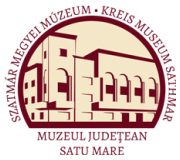Szőcs Péter Levente (szerk.): Călătorii istorice pe Valea Someşului. Ghid turistic (Satu Mare, 2014)
Culciu
Culciu Mare was initially part of the domain of the Kaplony kindred, being mentioned in 1300 the earliest. The village’s medieval history is marked by conflict between the descendent families of the Kaplony s. In the end, the Csomaközy family managed to become the most important owner of Culciu Mare. The Orthodox church, Assumption of the Holy Virgin, built in 1894 is used by both Orthodox and Greek Catholic congregation. The Calvinist church was built in 1906. Initially, there was a wooden church that needed to be replaced due to the community’s growth. Józsa Oroszhegyi (Szabó) (1822-1870), was born here; being famous for his revolutionary activity in 1848. Culciu Mic was part of Culciu Mare that lay on the left side of Someş river during the Middle Ages. In 1367, it belonged to the Báthoris noblemen occupied it, separating it thus from the rest of the settlement. The part of Culciu that lay on the left side of the river was first mentioned as an independent village in 1406 under the name Kyskolch. The Calvinist church was built in 1854, but its tower was only added in 1875. Apateu was formed by the unification of two separate villages, Dobrácsa and Apáti. The first village was mentioned in 1320 for the first time, while the latter one in 1367. During the Middle Ages, they were two separate settlements, their unification was made at the end of the 17th century, probably due to the depopulation of Dobrácsa. The Calvinist church was built in 1913, while the Orthodox church Apostles Saint Peter and Paul was erected in 1924. Cărăşeu was first mentioned in 1300 and it was part of the domain of the Medieşu Aurit castle until the 15th century. Later, the Báthori and Bagossy families owned it and eventually it was divided among several Cărăşeu • Szamoskrassó Curia Darvay Darvay-kúria Darvay Manor-house 67
